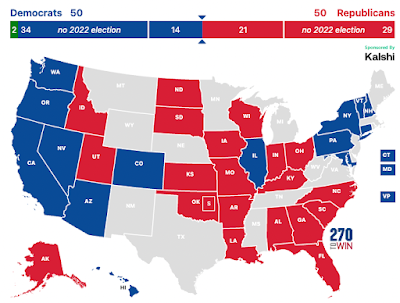My Day in Court
 |
| The Mostly Colorblind Courtroom Sketch. |
During my brief time in Washington, there has been a great deal to learn about our three branches of government. For both the legislative and executive branches, the lesson has been that there is a sprawling infrastructure underneath the politics we observe on the news or C-SPAN. Members of Congress are supported by staffs of varying sizes, as well as nonpartisan agencies, and also interact with outside groups, lobbyists and the media. Congress also spends a great deal of time overseeing the administration.
Meanwhile, the administration itself is primarily filled with non-political appointees, who take a longer view than the current 4-year term. As a result "the government" is much more static than campaign rhetoric or the media would lead us to believe. That being said, all of the political appointees in the administration will be fired on January 20, so upheaval is certainly possible.
However, on Monday when I went to the Supreme Court, I was struck by how self-contained the Court is. While there are hundreds of courts that lead to this one, once you are in the room, it all happens there. The Justices are on the bench (seven on this day as Justice Elena Kagan was absent), the government and the arguing attorney are before them, and for the 65 minutes or so of the arguments, all of the principals interact and the business of the court is done.
It started quick. The case was Beckles v. United States, and the arguing attorney Janice Bergmann was only two minutes into her opening remarks when Justice Ruth Bader Ginsburg interrupted her with a question. As someone who has prepared my own research talks ad nauseum this year, I can only imagine how many times an attorney like Bergmann would script and practice her opening statement, only to have it go off the rails almost immediately. (And we academics think we have to deal with hostile audiences!)
Once the questions begin, the self-contained nature of the court again becomes clear. The Justices ask questions to push the argument onto parts of the brief that could drive their decision. The Justices also react to each others' questions. At one point Justice Sonia Sotomayor seemed to try and make the Bergmann's argument on her behalf. I understood very little of the debate, the questions were about sentencing guidelines, especially in reaction to last year's Johnson v. United States, but I could feel the dynamics of the room, and they were not good for the Beckles team.
Next, the Deputy Solicitor General spoke and had a much easier time with the Justices. One interesting thing to me about this case was that since it dealt with sentencing guidelines, and much of the discussion was about the decisions of District Court Judges, a role these Justices clearly had experience with, the reasoning was not outwardly political.
Because of the interplay between the Justices, and how one question could push the argument in a completely different direction, I imagine each member of the court matters in how an argument proceeds. Each Justice besides Justice Clarence Thomas asked a question. These dynamics make me believe there are far-reaching consequences to the current vacancy on the court (beyond the potential for 4-4 decisions), and the failed nomination of Merrick Garland.
Finally, it is a shame that Supreme Court oral arguments are not televised. As part of our fellowship we met with C-SPAN, and they would love to televise these arguments. In the modern information age, it is baffling that these arguments, which are of the utmost importance, are not accessible to the public. Nonetheless, since the only way to see these arguments are to go in person, I would highly recommend going to one if you ever get the chance. It's quite a republican spectacle.

